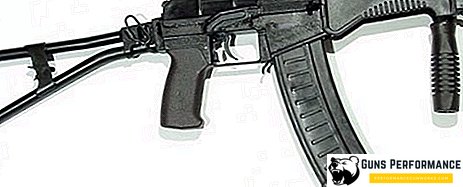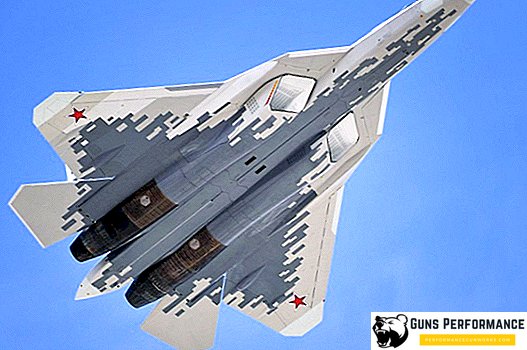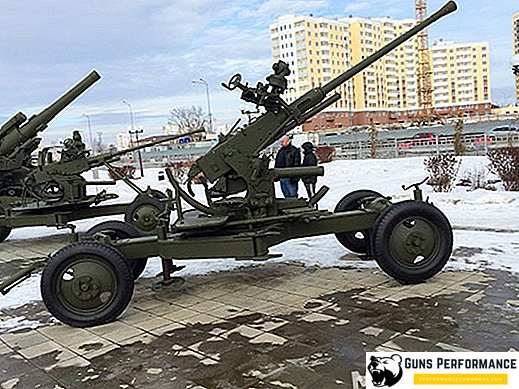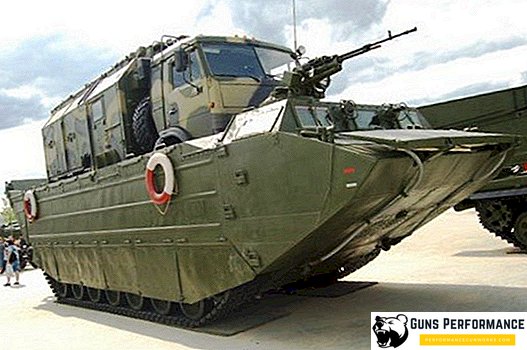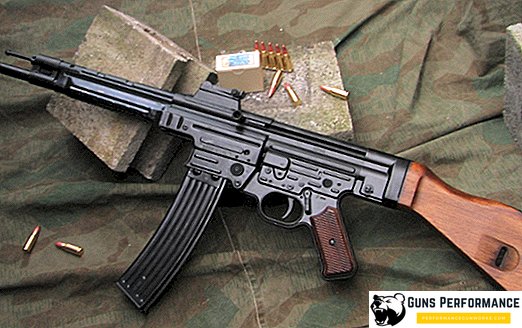During the Cold War, the USSR and its allies paid more attention to the development of ground forces and missile weapons, while the United States and other NATO countries had an advantage at sea and more numerous air forces. The USSR had nothing that could be compared with the American carrier strike groups (AUG) —the real floating airfields that could operate anywhere in the world.

Soviet generals and designers were looking for an effective means of countering AUG, anti-ship cruise missiles (RCC) looked the most promising in this direction. In addition, with the development of the conflict in the European theater of operations (it was considered the main one in those years), it was important for the Soviet command to isolate it, to thwart the possibility of transferring troops and military equipment from overseas.
The development of new types of anti-ship cruise missiles began in the late 50s and continued until the collapse of the USSR. Thanks to the Soviet developments of the Russian Navy, today it has the most powerful and sophisticated anti-ship missiles. They are in service with both surface ships and submarines. This weapon has many characteristics in the world. A striking example of this is the P-800 Onyx anti-ship complex (3M55).
History of creation
The development of cruise missiles began even before the First World War, but the technological level of the time did not allow the creation of even single successful samples. This task was successfully accomplished only in Nazi Germany: at the end of the war the Germans were able to create the first production V-1 cruise missile, which was used for strikes against Great Britain.
However, this weapon did little to help the Nazis, they lost the war, and their achievements in the missile sphere fell into the hands of the allies. After acquaintance with the captured samples in the USSR they decided to start work on creating their own cruise missiles, the work was led by talented designer Vladimir Chelomey.
Originally, cruise missiles were considered as an intercontinental means of delivering nuclear weapons, but it soon became clear that for these purposes ballistic missiles were much more effective.
Much more promising for the Soviet generals, this type of weapon looked like a means of dealing with the ships of a potential enemy, and work began to boil in numerous Soviet design bureaus. In 1959, the P-5 cruise missile was created in the Chelomey Design Bureau to arm submarines, the appearance of which resembled a fighter jet. P-5 had good characteristics, could carry a nuclear charge, but it could only be started from a surface position. This deprived the submarine of its main advantage - secrecy. A different solution was needed.
In 1969, the development of a new anti-ship missile complex began. Chelomey proposed to create a rocket that could be launched both from surface ships and from submarines. The new missile system received the designation P-700 "Granit", its development lasted almost fifteen years.
The P-700 was put into service in 1983, these missiles are used by the Russian Navy and today, they are considered to be the best in their class, according to their characteristics, the Granit has no world analogues. However, despite its excellent characteristics, this rocket has one drawback, but it is very significant: too large dimensions and mass of the rocket.
The launcher for the "Granit" rocket is a little inferior in size to the mines of a sea-based ballistic intercontinental missile. Submarine cruisers and surface ships, which are armed with these missiles, are among the largest in their classes. Accordingly, their cost is high. By the way, we can add that the Americans many years ago abandoned the creation of heavy anti-ship cruise missiles.
Other Soviet missiles (P-15, Termite, Mosquito, Malachite) could be installed on missile boats and other small ships, but their range was 80-120 kilometers, which was not enough for a confident defeat of the AUG or sea convoy . It was necessary to create a new anti-ship missile with dimensions smaller than that of the P-700, but with tactical and technical characteristics (mth) at the level of operative-but-tak-ti-Gran-type ro-ke-t . She was supposed to be suitable for the armament of small ships.
Development of the new rocket began in 1981. She received the designation "Onyx" (3M55) and was supposed to be universal: they planned to arm both surface ships and submarines with these weapons, as well as to ensure the possibility of launching Onyx from aircraft and coastal anti-ship complexes. In terms of its versatility, it had to surpass its American rival, the Harpoon rocket.
According to the technical requirements, the new missile had a significantly reduced (up to 200 kg) combat unit, the flight range was 300 km, the rocket had to fly most of its trajectory at an altitude of 15-20 meters. A warhead of 200 kg is quite sufficient to defeat medium-sized ships, while salvo use of missiles was planned to destroy large ships.
When creating Onyx, the designers had difficulties with the versatility of the rocket: launching from submarines and surface ships required different modes at the initial stage of the flight. But in the end, a universal solution was still found.
Tests of the RCC were to begin in 1987, but the process was somewhat delayed, and then the collapse of the USSR occurred. This led to the fact that more than a decade of work on "Onyx" were almost suspended. The first demonstration of the Onyx rocket to the general public took place in 1997. Only in 2002, this rocket was adopted. In 1998, an agreement was signed with India on the creation of the BrahMos rocket - in fact, onyx anti-ship missiles modification.
This RCC does not fall under the restrictions of international treaties on missiles, and therefore has a very high export potential. The export version of the P-800 is called Yakhont, it is already in service with several countries. The "Yakhont" mass of the warhead is slightly less and amounts to 200 kg.

Description of the rocket
The anti-ship cruise missile "Onyx" was created according to the normal aerodynamic configuration; it has trapezoid-shaped folding wings, as well as folding plumage. The good aerodynamic form of the anti-ship missile and its high thrust-to-weight ratio provides the rocket with high maneuverability, making it possible to evade enemy air defenses and missile defense systems. In addition, the shape of the 3M55 missile makes it hardly noticeable for enemy radar detection devices.
The power plant of the rocket consists of a ramjet engine (ramjet), the acceleration at the initial stage is provided by solid fuel boosters. The power plant of the rocket allows it to reach speeds of 2-3.5 Mach for most of the flight path. The ceiling of the rocket is 20 thousand meters.
The air intake cone is located in the center of the front part of the rocket; for the anti-shipboard anti-ship missile, it is covered with a circular fairing, which is dropped immediately after the Onyx comes to the surface of the water. Rocket fuel is kerosene.
In the air intake there is a head of guidance, control equipment and a warhead. Onyx is capable of destroying well-protected targets under conditions of strong electronic countermeasures, this missile is able to determine false targets, independently capture and track targets. Rocket homing head (GOS) is capable of capturing a target in any weather, hitting radio-contrast ground targets.
Immediately after the release of the 3M55 rocket from the launch canister, the upper stage is activated, which accelerates the rocket a few seconds before two speeds of sound. After combustion of the upper stage, the rocket sustainer turns on, which provides a speed of about 2.5 Mach. The 3M55 guidance system is combined: in most of the trajectory it is inertial, and at the attack stage it is radar. Target detection range is 50 kilometers.
Onyx has a powerful computing complex onboard, a radio-to-you-with-measure, built-in self-monitoring system.

Immediately after launching, the rocket rises to an altitude of 14 km, captures the target, after which it turns off its radar and descends to the lowest possible altitude (10-15 meters). In the case of such a launch, the maximum flight range (300 km) is ensured, and the missile’s vulnerability to air defense facilities is significantly reduced.
There is another possible flight path: with a height not exceeding 10–15 meters, along the entire length of the path. However, in this case, the range of the 3M55 decreases, it is no more than 120 km.
The first type of trajectory allows the rocket not only to capture the target, but also to choose the most important target (if there are several of them), as well as discard false targets.
In addition to firing a single rocket, for Onyx a salvo launch against a group of ships is also possible. In this case, the missiles are capable of distributing targets among themselves, preventing duplication in the event of defeat, and developing attack tactics. After hitting the main target in the group, the rockets attack the secondary ones.
The onboard computing system contains data on the possible tactics of enemy air defense and electronic warfare, as well as electronic portraits of the main classes of modern ships and their likely construction. Using these data, the missiles can determine what they are attacking: AUG, convoy or amphibious group, after which they can independently choose the most effective tactics, make an effective attack plan.
Each rocket is located in a special transport and launch container that protects the product during its transportation. Rocket launch angle - from 15 to 90 degrees, which allows them to be located in launchers of an inclined and vertical launch. The rocket in the container is very convenient for storage (including long) and transportation. You do not need to bring liquid or gas to the container, you can not remove the rocket for technical inspection, all actions are carried out remotely.
Aviation modification of the "Onyx" has some differences from the missiles mounted on surface ships and submarines. It has a shorter and lighter starting accelerator, the nozzle and the air intake are closed with special fairings.
Advantages of PKR "Onyx"
This anti-ship cruise missile has a large number of advantages that are recognized by both domestic and foreign experts. It is believed that such cruise missiles for many years will be the best in its class. Their advantages include the following:
- significant (over-the-horizon) firing range;
- the autonomy of the combat use of Onyx: the rocket itself captures and accompanies the target;
- several different rocket flight paths (high + low, only low);
- high speed 3M55 and low flight altitude;
- universality of the missile system: it is fully suitable for surface ships, submarines, coastal complexes and aviation;
- low radar visibility;
- the ability to hit targets with a high level of electronic countermeasures.
Application
Today PKR "Onyx" are in service with several countries at once. In Russia, this complex is installed on the Project 1234.7 Nakat rocket ship, on Project 21631 Buyan-M ships, and also on the Severodvinsk nuclear-rocket launcher. In 2014, this rocket was installed on 35 Su-30 SM aircraft. In addition, it is the "Onyx" is the basis of the coastal complex "Bastion".

In addition to Russia, the Onyx missile system is in service with Vietnam (2 units), Syria (number unknown) and Indonesia (number unknown). Modifications of the Onyx missile (BrahMos) are armed destroyers and frigates of the Navy of India, as well as these missiles are equipped with Indian Su-30 MKIs.
Specifications
The following are the tactical and technical characteristics (mth) of the P-800 Onyx anti-ship missile system.
Description
| Developer | NPO mechanical engineering | |
| Designation | Complex | P-800 "Onyx" |
| rocket | 3M55 | |
| NATO designation | SS-N-26 | |
| First start | 1987 | |
| Dimensions | ||
| Length m | 8 | |
| Wingspan, m | 1,7 | |
| Diameter, m | 0,7 | |
| Starting weight, kg | 3000 | |
| Transport and starting glass (TPS) | length, m | 8,9 |
| diameter, m | 0,71 | |
| starting weight, kg | 3900 | |
| Power point | ||
| Marching engine | SPVRD | |
| Thrust, kgf (kN) | 4000 | |
| Mass KS, kg | 200 | |
| Start-up stage | solid fuel | |
| Mass of CPC, kg | ok 500 | |
| Flight data | ||
| Speed, M | on high | 2,6 |
| on the ground | 2 | |
| Starting range, km | along a combined trajectory | up to 300 |
| along the low-altitude trajectory | up to 120 | |
| Flight altitude, m | on the march | 14000 |
| on the low-altitude trajectory | 10-15 | |
| have a goal | 5-15 | |
| Control system | with inertial navigation system and radar seeker | |
| Gos | range, km | up to 80 |
| target angle, hail | +/- 45 | |
| weight, kg | 89 | |
| readiness time, min | 2 | |
| Warhead type | penetrating | |
| Weight, kg | 300 | |
| The slope of the launcher, hail. | 0-90 | |
| Complex readiness for launch, min | 4 | |
| Time of interregional checks, year | 3 | |
| Warranty period, year | 7 | |


